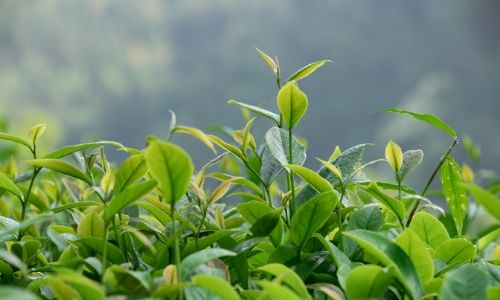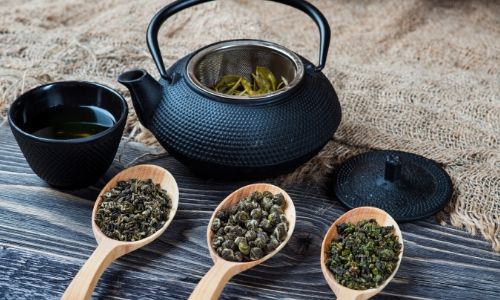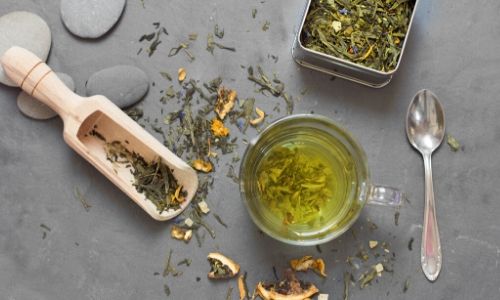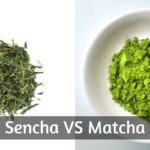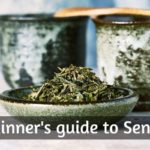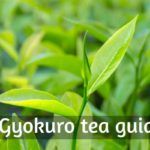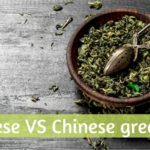Wondering how green tea is made ?
If you're a big fan of green tea, this is probably one of the first questions you're going to ask yourself.
We'll explore just that in this post, and hopefully make things as clear as possible for you.
We'll be following the production process and discuss details along the way.
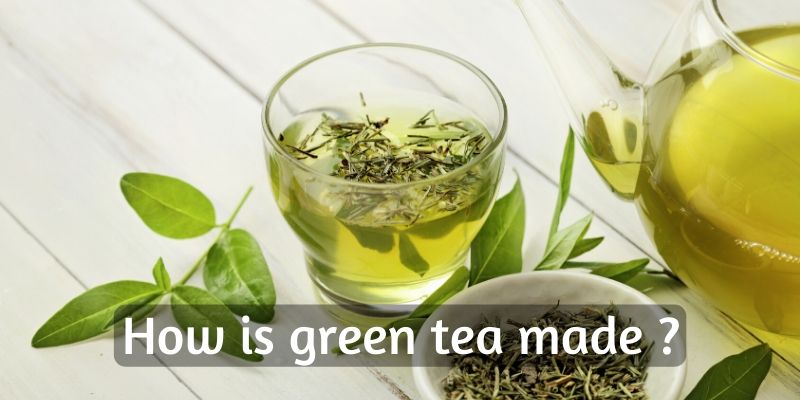
Table of Contents
So how is green tea made ?
Green tea, like most other true teas, is made from the leaves of the Camellia sinensis tea plant. The leaves go through a process of oxidation, heat treatment, and then a final shaping and drying phase.
The overall production process of green tea is a bit shorter than black tea, for example, since there is less oxidation and processing to get the final version.
What is green tea made of, exactly ?
To be more specific, green tea is made from the plucked leaves of the Camellia sinensis plant.
Those leaves are actually the new growth, so they will be fresh, young leaves.
The industry standard is 'two leaves and a bud'. This means that there are two young, freshly unfurled leaves on the sprout, and one single bud, the newest growth there is.
A young leaf means a fresh flavor in the tea. Using older leaves would mean changing the flavor of green tea, and not using the bud at all would again change the flavor.
Let's take a closer look at how green tea is actually made, so we can see each step and talk about it.
How green tea is made
Please note that this production process is a generalization.
Some specific tea types may have some deviations from this process, and they will result in a slightly different tasting green tea.
What we'll be covering today is the overall production process, and the main purpose each step is meant to have.
1. Harvesting the tea leaves
Starting with the most important part, the tea leaves themselves.
A poor harvest will result in a poor tea. So the tea plants have to be grown well, hydrated just right and at the proper elevation interval.
Most tea plants are grown on the sides of the mountain, standing on a nice incline. This incline is necessary since the Camellia plant needs frequent but small amount of running water.
Standing in a puddle does not do it any good, so this is why you'll see tea farms way up high on the mountain, on slopes and high hills.
The tea plants are grown close together, and they are pruned or picked often to encourage new growth.
Back to the leaves themselves, there are generally three harvests, with the first in late spring.
The following two harvests span the entirety of summer, and the quality is a bit lower than the first harvest.
Each harvest is meant to produce the best leaves, so only the two leaves and a bud style growth is picked.
While we're at it, we should note that some tea plants are grown in the shade, and some in the sun.
1. Sun grown green tea
The sun grown tea is the most common version, used in almost all green tea.
This is the simplest way to grow the tea plant, and will produce the green tea most folks know.
No special care or extra precautions are taken when growing the tea plant this way.
2. Shade grown green tea
Growing tea in the shade is meant to induce a better, stronger flavor in green tea.
This is because more polyphenols are produced in the leaves and this even influences the color of the leaves a little, turning much greener than usual.
Growing the plant in the shade means that as the plant is young (or in the beginning of spring), it's left in the sun as usual. But after a couple of weeks it's covered almost completely.
It remains covered for another two weeks (roughly), and is only uncovered when harvested.
This type of farming is more complicated and yields better leaves, so the teas made from these plants will always be a little more expensive.
2. Processing the leaves
Once the leaves are harvested, they are then taken to be sun dried fora short while, and then oxidized.
Oxidizing happens when the leaves are bruised, but not completely broken.
The walls of each cell in the leaf are broken, which helps change the flavor to a slightly fermented one. Not fermented like kombucha, but definitely not the same as unoxidized green tea leaves.
The key here is how long the leaves are allowed to oxidize.
Green tea is the least oxidized of all, and it gets a heat treatment very quickly, long before black tea or Oolong for example.
The heat treatment is meant to lock in the current oxidation state. Meaning the leaves cannot change flavor, and will retain their taste.
Whether it's pan firing, over firing, tumble drying or sun drying, the idea is the same: curing the leaf with heat.
However it should me mentioned that the longer the heat treatment lasts (sun drying instead of pan firing), the more oxidized the flavor will be.
This is not a bad thing, just something that happens and changes the final flavor of green tea.
3. Drying and packaging
Once the leaves are fired and cured, they are then shaped into whatever the recipe calls for.
Some are shaped into tiny little balls, but most often you'll notice they are flat and needle-like. Rarely, you'll notice the leaves being twisted in a sort of spiral shape.
Once shaped, the leaves are dried, either by air drying or through actively blowing cool air on them.
After the leaves are dry, they are sifted according to size, and graded for quality.
Once that is done, each batch is packaged. Most often the end product is loose leaf tea, but throughout the production process some pieces of leaves break off.
This results in a sort of tea dust, which is actually what is in most teabags. Sometimes you'll notice larger pieces, but most of the time it's the tiny broken pieces.
Chinese vs Japanese green tea
We should note here that there is a difference between Chinese and Japanese green tea.
Granted, most green teas are made in the Chinese fashion, so it's more of a style than a geographical thing.
The first difference is that the Japanese usually steam their green tea leaves, instead of curing them with high heat.
This preserves the bright green color, and also imparts a different flavor. Or rather, it keeps the flavor as close to the true green oft he tea leaf itself.
They also don't oxidize their leaves at all, so again you're getting the greenest flavor possible.
The Chinese method is fond of using high heat, and most often it involves a dry wok or large pan that is continuously moved with the leaves still in it.
This is a very common method, and you'll notice lots of green teas made this way. It may also have to do with the fact that most tea comes from China to begin with.
You can also find flavored green teas
If we're talking about flavored green tea, then we've got to take another look at that processing stage.
Adding flavor is done between curing with heat and drying the leaves, usually. This is especially true for tea that are spritzed with essential oils or other types of flavors that don't come from a large piece in the tea.
For example you can get jasmine flavored green tea, green tea with actual jasmine flowers in it.
When there are large pieces added to the tea itself, such as dried fruit or flower petals, they're often added in the beginning, before oxidation.
Conclusion
Green tea is one of the most common and well loved tea types out there. You can easily find it in many shops, and the quality will vary from brand to brand.
I hope this post was helpful in explaining just how green tea is made, and you have a better understanding now.
And in the end, remember that it's much better to get loose leaf tea than teabags, since it provides the best and most complex flavor.
If you want to know more about coffee or tea, feel free to check the related articles below. Who knows what else you might find ?

